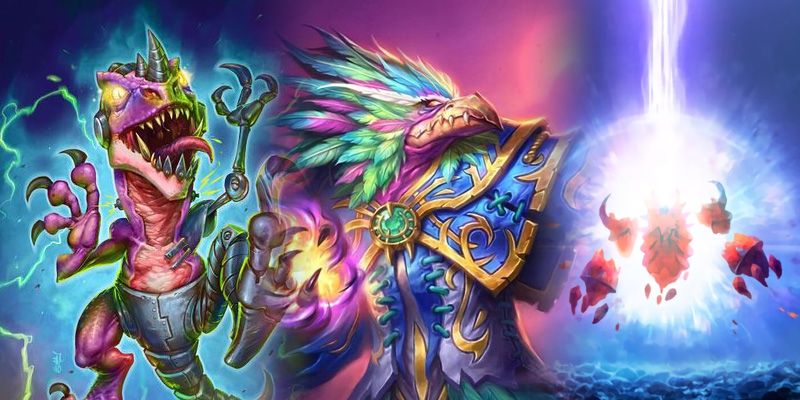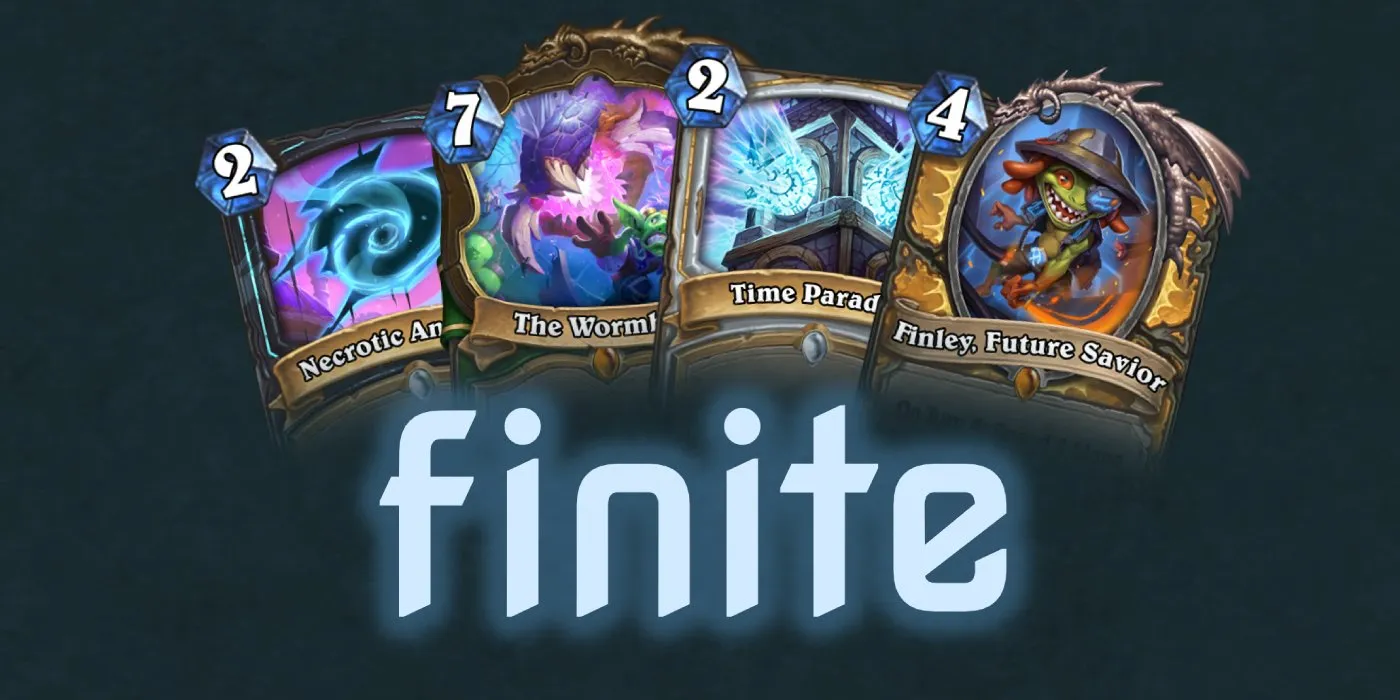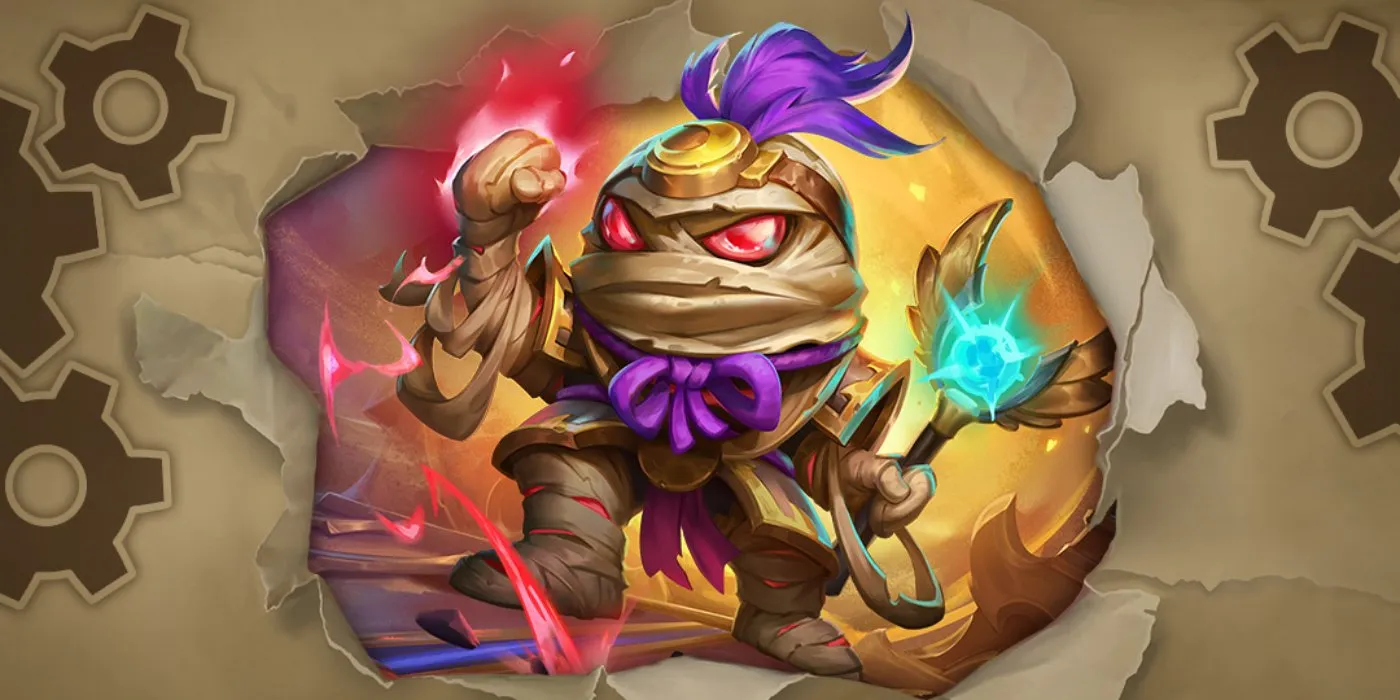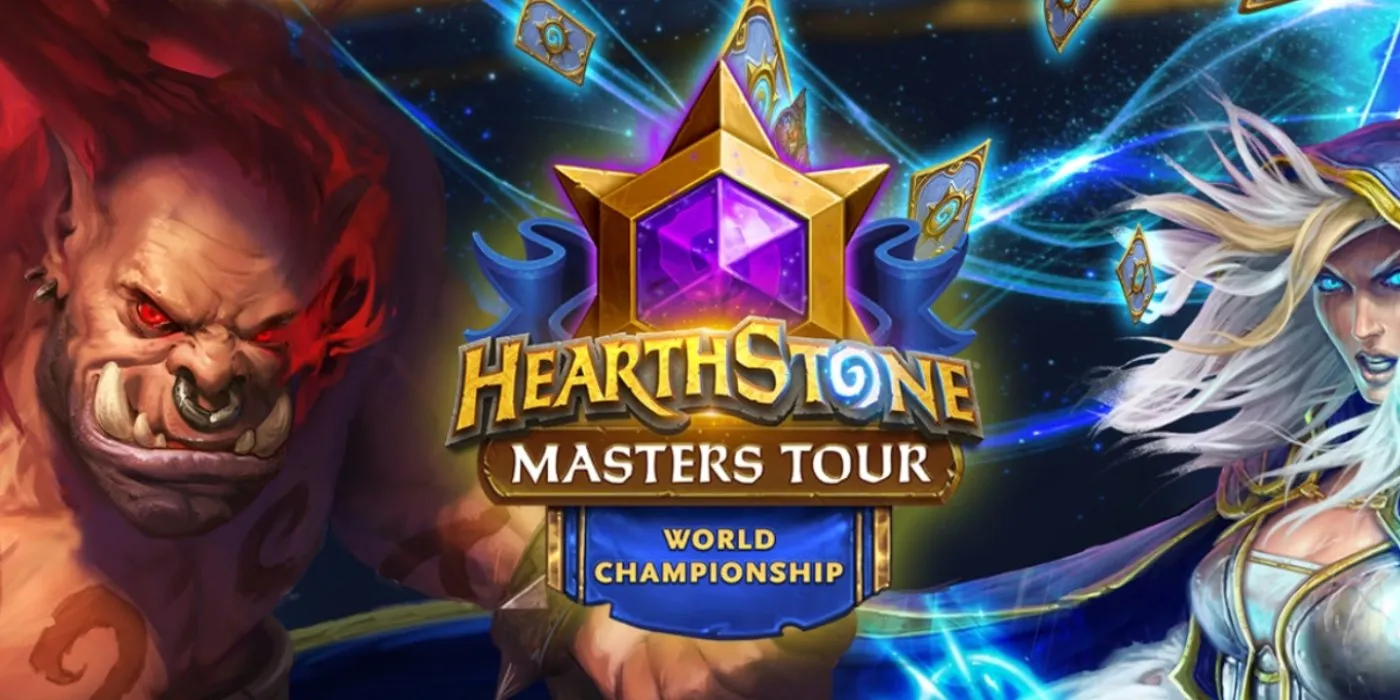What is Rock, Paper, Scissors?
Rock beats Scissors, Scissors beats Paper, Paper beats Rock
Historically, all Hearthstone decks can be broken into 3 primary archetypes: Aggro (Rock), Control (Paper), and Combo (Scissors) decks. These overarching deck categories cover pretty much every deck that we have seen rise to popularity in each meta. In each metagame, Hearthstone decks of each type act as counterbalances to one another. My goal each week is to bring you a deck from each archetype that is performing at the top of the Standard Ranked meta with a brief overview, decklist, and how to beat these decks. The rule of Rock, Paper, Scissors defines which matchups are favorable and which are not, however, any deck can win any game if you play to your outs and understand your best chance to win a game.
Goals of Each Type
Rock (Aggro) - Think "me rock, me smash!". Defeat your opponent with early minion damage, board presence, and direct damage via minions or spells from hand.
Paper (Control) - Your goal is to cover your opponent so they can't do anything. Defeat your opponent by running them out of resources; Health, minions, spells are all resources.
Scissors (Combo) - The term "1000 tiny cuts" comes to mind, after all the cuts your opponent realizes they have been beat. Defeat your opponent by playing cards, which when combined, create powerful effects for One-Turn-Kills or massive board-swings in single turns.
Weekly Overview
The metagame is in flux with the nerfs this week. The former powerhouse decks of Mage, Control Warrior and Combo Priest are having their most powerful cards changed. These changes leave room for other decks to be worked into the metagame and potentially become the new Tier 1 decks. This week's "Rock, Paper, Scissors" features 3 decks which are poised to make a big impact on the post-nerf metagame. We feature Highlander Hunter, Do Nothing Quest Priest, and Malygos Quest Druid.
I have tested and played extensively with each of these lists from Rank 3 through Legend, and believe each will be viable post-nerfs. Typically I prefer to post HSReplay supported decks, but due to the nature of me teching for matchups and testing a lot of cards to fine-tune them, there are not enough pilots for each deck. Consider this your personal sneak-peak at my deck-building results!
A Word about Highlander Decks
I imagine that those unfamiliar with the history of Reno, Singleton or Highlander decks wonder how on earth we came to agree to call them by this name. Singleton is a rather straightforward term so we'll just leave it as is, a dictionary search of singleton should explain it. There is an old 80s movie called "Highlander" with an intense theme: "There can be only one!!!". The movie revolved around an immortal race of men destined to fight each other in battle until only one of them remained standing to gain ultimate power and remain the only immortal on the planet. It’s worth a watch for the memes alone. Sean Connery was mysteriously chosen to portray an Egyptian swords master, Juan Sanchez Villa-Lobos Ramirez. He teaches the main character, Connor Macleod. This movie is the origin of the name Highlander Decks, there can be only 1 copy of each card in your deck. By having only one copy, you enable incredibly powerful cards to take their full effect. This originated with the original Reno Jackson from League of Explorers because he would heal your hero to full health when played, thus adding the name Reno Decks to the pool of names. We also had a series of Highlander cards for the Kabal in Mean Streets of Gadgetzan. Kazakus was a powerhouse that could get you out of many tricky situations and anyone who played Hearthstone when Shadowreaper Anduin + Raza the Chained existed, remembers one of the most powerful combo decks ever. Over the years, Highlander decks have been a style of play that many have embraced and loved.
With the Saviors of Uldum we have 5 new Highlander cards: Zephrys the Great, Dinotamer Brann, Elise the Enlightened, Sir Finley of the Sands, and Reno the Relicologist. All 5 cards are incredibly powerful, with the ultimate being Zephrys the Great, literally the perfect card. Zephrys the Great is so powerful, that even classes without any singleton synergy have built decks solely around him. These decks have so many tech and deck-building choices that each game feels unique. Highlander Hunter and Mage have been incredibly powerful in the new expansion and further iterations of other Highlander decks are bound to pop up after nerfs. Highlander decks are here to stay for a few years and it is a great thing!
Rock - Aggro
The term SMOrc comes to mind when I think of aggro.
Aggro is viewed as the most straightforward of the deck types for a beginner to understand and play. Your goal is to kill your opponent before they have a chance to stabilize the board, keep their life total outside your damage from hand, and you run out of cards to play. Your goal with an aggressive deck is always to balance how much damage you are dealing to your opponent each turn and fight for control of the board at each stage. Aggro thrives against Combo decks which sacrifice board presence, removal, and healing in order to play powerful combinations of cards that can win them the game. Aggro suffers against Control which focuses on removing all of your minions, healing, and generating value so they have more resources at the end of the game.
Featured Deck of the Week: Highlander Hunter
A Word about Midrange Decks
Those of you familiar with the Rock, Paper, Scissors analogy may have asked yourself, what about midrange? Throughout Hearthstone's history there have been utterly dominant decks which sit in between archetypes by utilizing a number of different win conditions. It functions as an aggro deck against combo decks, combo against control decks, and control against aggro decks. Midrange decks win games through their powerful mana-curve; if they use all their mana each turn, it will beat just about any matchup. The Highlander Hunter is the best midrange deck we have seen in quite some time: the combination of removal tools, face damage, and powerful, sticky minions, give it unparalleled power. The ultimate tool in Zephrys the Great gives the Hunter access to whichever tool it needs to win the game and Sandbinder makes it extremely consistent. One perfect turn is all this deck needs to run over the competition.
Featured is my personal version of the deck that I used to climb to Legend this month, there are lots of cards to include or not include depending on your personal preference. I focused on early removal, healing, and cards that draw more cards to make it as consistent as possible.
How to Play It
Highlander Hunter has popped up as one of the Tier 1 decks to beat with the release of Saviors of Uldum. The variety of tech choices is what makes the deck so fun to build and play. It had very favorable matchups against most of the current metagame including Luna's Pocket Galaxy Mage, Control Warrior, and Combo Priest. It will be interesting to see how this deck changes with a potentially faster metagame. The current version of the list highlights big tempo, value cards to consistently find itself in a good board position. When looking at your deck, ensure you have nothing but cards which serve a purpose. I chose a slightly lower curve so I can more consistently beat more aggressive decks.
When this deck can curve out, you feel unstoppable. Your ideal turns are:
- Secretkeeper
- Rat Trap (Control, Combo) or Snake Trap (aggro)
- Masked Contender, Ursatron, or Animal Companion
- Hyena Alpha, Lifedrinker, or Sandbinder (the ability to draw Zephrys the Great is fantastic)
Enjoy!
How to Beat It
This deck is incredibly hard to beat if it draws the perfect curve into your plays. However, it is vulnerable to wide board states and direct damage. The deck focuses on building towards a winning board state around turn 8 to 10, so look to ensure you are ahead on the board and life total by then if you have not won the game already. I find that fast damage decks can push for lethal early: Token Druid, Murloc Paladin, Murloc Shaman, Aggro Overload Shaman, and Tempo Rogue can all beat the Hunter before they take control of the game. If you are running control or combo decks make your focus to fight for board aggressively, once you lose it, Hunter will steamroll damage to beat you. A multitude of taunts can also be run to ruin a Hunter's day, they have limited removal so if you force it out, you can play big threats with few repercussions.
Paper - Control
Control is challenging because it takes practice to know what threats to expect from your opponent. The more knowledge you have of your opponent, the better you will perform. Control, typically, has a finite number of removal tools for individual minions and board clears. When playing this archetype each turn you have to ask yourself a few questions: Do I need to remove this minion/board right now? How can I stabilize this board to keep it from getting out of control? How do I prevent lethal damage from my opponent's hand? By answering each of these questions, you learn when to clear a board and when to leave it, when you should be playing a taunt minion, and when you absolutely need to heal. Your end goal is how/when to stabilize and take full control of the game so your opponent cannot get back into the game. Control thrives against Aggro because eventually all Aggro decks run out of cards; meaning that if you can keep the board, they will run out of steam and lose. Control suffers against Combo because it often lacks proactive plays to deal damage to the opponent, allowing Combo to play their combo pieces whenever they want.
Featured Deck of the Week: Quest Do Nothing Priest
How to Play It
This is not what I would consider to be a top tier deck in the current metagame, in my brief experience playing this deck I found myself out-valued by Control Warrior, obliterated by Luna's Pocket Galaxy Mage, and laughed at by Combo Priest which runs [Hearthstone Card (Mass Dispell) Not Found]. However, the nerfs to these 3 decks gives the Priest a chance to build a wall and keep it up. This deck spends turns taking damage at the start, followed by heavy amounts of healing, and finally removal and taunts which allow it to take control of the board and win by grinding out the opponent. When you play Mass Resurrection and it lands on Archmage Vargoth you have a massive wall that is hard to beat.
How to Beat It
This deck is slow, like really slow. It wins gradually and slowly, making aggro decks believe they have a chance. However, this deck can compound healing effects with resurrection to turn a sure lethal into an instant concede. Silence, transform, or Sap effects will reduce the effectiveness of the Priest's resurrection effects. The Priest's current removal is exactly in-line with the class, "narrow but powerful", learn to play around the different spells or force them to use removal unoptimally and you can get ahead. The final difficulty this deck faces is direct damage, often 12-18 direct damage will be enough to win the game, save your damage for this outcome if at all possible. Good luck!
Scissors - Combo
Combo is sometimes classified more as a game of solitaire than a game of Hearthstone. Historically, combo decks are assembled in a way that once you complete each step, you win the game with a lethal in one turn, known as a One-Turn-Kill (OTK) deck. However, the current state of Hearthstone has very few decks which are capable of this. Most combo decks execute a series of plays to set up incredibly powerful boards by cheating out discounted cards or an infinite source of large minions (think Pogohopper Rogue and Conjurers Calling Mage). Combo decks thrive against control because the control deck often does little to nothing to threaten lethal against you. Combo suffers against aggro because by running combo cards, you sacrifice removal and healing; allowing aggro to beat you before you complete the combo. Once a combo deck has played it's combo cards, it is almost unstoppable.
Featured Deck of the Week: Malygos Quest Druid
How to Play It
Malygos + 2*Moonfire has made Druid capable of some version of an OTK deck possible for many years in Hearthstone. This deck perfectly exemplifies the great challenge of playing Combo decks. There are many ways to win, none of which are easy to find or to put yourself in position for (steps for the combo below). Your entire goal of the deck is to set up massive swing turns while drawing as many cards as possible to finally end the game with an OTK. There are nothing but removal tools, draw, healing and combo pieces in the deck. Unlike other Quest Druid decks; this deck uses Untapped Potential to draw and stay alive, rather than as the win condition itself. Untapped Potential makes up for a lack of removal once you have 2 rushing 5/5 Oasis Surgers, a rushing poisonous 4/6 Wardruid Loti, deal 4 draw a card Wrath, deal 7 to one minion and 2 to all others Starfall, and [Hearthstone Card (Floop's Glorious Goop) Not Found] to allow you to play all of your removal in one turn and leave a board presence. When you can stabilize with a taunt and heal 12 against aggro with Hidden Oasis, it makes the game instantly winnable. This deck creams slow decks and stands a good chance against aggro with incredibly powerful swing turns around turns 5/6/7, it's a blast to play!
Combo Steps
For the guaranteed full OTK you must draw almost your entire deck and satisfy the following conditions:
- Play Malygos with Flobbidinous Floop in hand.
- Play an activated Elise the Enlightened with Flobbidinous Floop and 2 Moonfire, and no more than 2 other cards in hand or your copy is not guaranteed.
Note: Elise will copy Floop, who retains his state as Malygos. - This gives you two 4-cost Malygos and 4 moonfires in hand.
- Play your two Malygos copies + 4 Moonfires = 44 damage, POGCHAMP!!!
You can also create other win conditions by utilizing the discount off Dreampetal Florist on Malygos. In my opinion, nothing in Hearthstone is more satisfying than killing a Warrior at 44 health or any other deck from full to 0.
How to Beat It
If you can build a board that is unanswerable for the Druid's removal, it will lose. The Mage has been such a difficult matchup once Luna's Pocket Galaxy is up, due to the lack of a big board clear. Your focus should be to take advantage of the 4 unoptimal turns required to complete the quest by racking up damage and creating a massive board at the end of the game that it cannot remove. Keep in mind that the Druid can swing it's health dramatically while also creating a board. If you find your health getting low against it, make sure you are out of minimum damage range of roughly 12. The deck suffers to early big minions, Combo Priest is particularly polarizing and Aggro Warrior with Rampage can have a field day. With the 3 best counters to this deck getting nerfed, look to find ways to beat this deck in the future.
I hope you have enjoyed this week's edition of Rock, Paper, Scissors. Tune in next week for another 3 competitive decks of each archetype.
Have you encountered these decks or played them? Tell us about your experiences and share your thoughts below!




Comments
Excellent article, now to try a highlander deck.
So is no one going to talk about how God **** ****ing stupid Quest Paladin is? We don't like infinite decks but here is an infinite amount of undying mechs that keep their buffs, and when you run out use endless army. **** THAT
Highlander Hunter should be the Midrange example. Even all the text in the midrange section is dedicated for it.
Aggro should showcase an actual aggro deck, e.g.
I've beat the Highlander Hunter with a variation of the wall priest listed, so yeah, it's a good pairing of rock vs. paper. I'm liking the stats I've seen on HSreplay on Quest Wall Priest against some other long-play decks like warrior and Cyclone Mage.
Subs to suggest:
Arcane Dynamo for more Mass Res or Plague of Death; the former is essential to beating Control or Bomb Warrior while the latter works against more problematic board makers like Conjurer's Mages or deathrattle-reliant paladins, and the big spell add extra oomph for a King Phaoris turn as well. Don't worry about the 3/4 that might get rezzed; you already have King Phaoris and friends as well as Psychopomps screwing up the pool, and your late-game hero power can turn small things into big threats.
High Inquisitor Whitemaneis situational and can be as dead as holding Archivist Elysiana in your opening hand for an entire game, but when you can mass rez a Convincing Infiltrator or reborn taunts that you just sacrificed in your turn as well as toss in a big body and possibly add a hero power buff to it or another card, it can break an opponent to concede. Also, nobody expects it because it's so rarely seen (or owned -- lucky me for landing a golden one; soooo pretttty).
Seance is worth having for [Hearthstone Card (Catarina Muerte) Not Found] getting a second act, Archmage Vargoth refilling your hand if you happen to have multiple minions up, or an opponent's valuable card like Archivist Elysiana or Siamat.
I appreciate the added insights to the deck!
As always, these posts are a nice read. Thank you!
I am playing a variant of Highlander Hunter, but I am finding difficulty in winning since I do not have Subject 9 and Zul'jin. Do you think it is worth crafting? Or these cards are not a game changer and I am just bad :D
Subject 9 is Great not only because of draw, but massively thinning your deck. I feel you can get away with out Zul'jin if you can close the game without him as back up.
Subject 9 draws between 3 and 5 very specific cards to thin your deck which will help you find your most powerful cards more easily, so of the two I would say it is more important to the Secret Highlander specifically. Zul'jin is your late-game value card, replaying all of your secrets and other spells gives you the last bit of minions + damage to get past a heavy control deck or some small healing against Aggro. But if you play hunter, you will ultimately play Zul'jin in every deck so take that into account when crafting. Both will improve your winrate, but you should be winning without them too.
Very great write-up! Looking forward to try highlander hunter! SMORC FTW!
quote from: Nudewookie:
"Sean Connery was mysteriously chosen to portray an Egyptian swords master for the main character"
Sean Connery's character, Connor MacLeod, was not Egyptian, he was from Scotland. I know this is not the point of the article but I had to say something.
Juan Sánchez Villa-Lobos Ramírez is the character Sean Connery plays. Connor MacLeod is the main character, Juan Sánchez Villa-Lobos Ramírez is the swords master/teacher.
oh yeah, I messed up, sorry.
Pretty sure you need to reverse steps 1 and 2 of Maly Druid. If you play Elise after Maly, your Floop will copy Elise.
One copy of Floop stays as Malygos when it is copied by Elise, it was unintuitive to me at first but that’s how it works.
The nerfs just made things worse..
Why was prismatic lens not touched?
Pre or Post nerfs, the HS community always oozes satisfaction ^^
I think your Malygos combo steps may be in the wrong order...
...Or does the copied floop remain as Malygos ignoring the fact you played Elise? If so this is an interaction I was unaware of.
One copy of Floop indeed stays as Malygos, it was unintuitive to me at first too but that’s how it works
Nice guide.
However, I can't refrain from criticising the choice of that Highlander Hunter as an example of Aggro deck. Indeed you explain about Midrange, nonetheless having that deck under Rock-Aggro is arguable at best.
A deck with a 10-mana card like Zul'jin, Zilliax, Sandbinder, etc, and NO Leeroy Jenkins cannot be called "Aggro".
Independently of how good the deck is (which i cannot argue about), independently of it acting as Rock in the meta (which I would still argue about, according to your own definition of "Rock"), it's definitely misleading about what is conceived as "Aggro".
Glad you liked the article! I concede your point that it may not fit perfectly into Rock-Aggro. But I’m trying to feature meta viable decks within 3 archetypes (midrange being a hybrid of a few for sure) and this one has been dominant. It reminds me of Spiteful Summoner Druid, which I would also say is more aggro than anything else in spite of Ultimate Infestation. There are versions of the deck with Leeroy. There are versions with faster curves and mech combos. The deck wins by hitting the opponent in the face, hence I put it in Aggro.